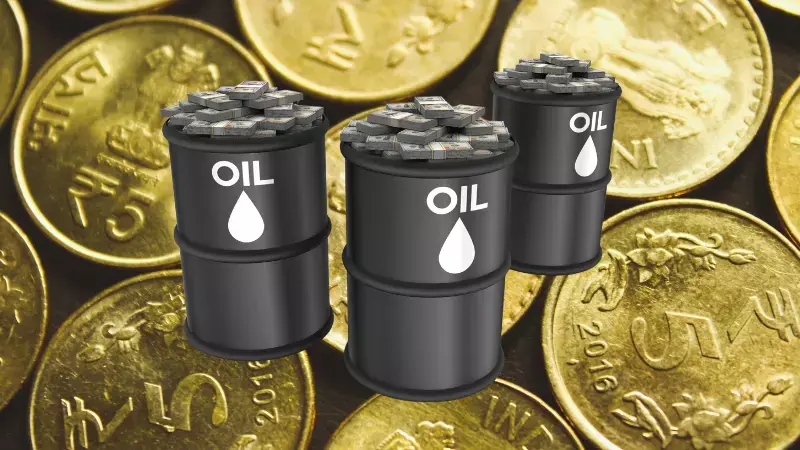
Taxes have been a part and parcel of our daily lives as well as our yearly routine. Come to the end of the financial year and all the corporates are in a rush to close their books of accounts and file their taxes before the deadline. Taxes are the single most huge revenue source for a country, especially a developing nation. Therefore, governments have to maintain a fine balance between maximizing their revenue sources at the same time not overburdening their citizens and the corporates in the country. The recent fluctuations in crude oil prices have provided the government with an opportunity to levy additional taxes on the windfall gains of the oil companies and increase their revenues.Let us understand what this windfall tax is as
What is windfall tax?
To understand windfall tax, we have to first understand the windfall gains on which this tax is levied. Windfall gains are the unexpected profits or gains that are accrued to a business on account of external factors that are often beyond their control and the business has not made targeted efforts to earn the same.
The recent increase in crude oil prices has led the oil companies to gain unprecedented profits. These profits were the result of the economic condition faced by the world that has been aggravated due to the ongoing war creating a perfect scenario for the oil companies to have a one-off case of unprecedented profits. Taxing these super-normal profits can prove to be a good revenue source for the government.
Therefore, India joining other nations across the world has levied a windfall tax on domestic crude oil producers and exporters. The government’s decision to tax the windfall gains of oil companies has shocked most analysts as there has been no specific timeline for the tax at these levels as well as no definite tax slabs. The government has decided to levy the tax and review the same on a fortnightly basis.
Also Read: What factors determine global crude oil prices?
What is the current levy of windfall tax in India?
The windfall tax was first imposed on oil companies in July 2022 and has been revised on multiple occasions. The details of these taxes when the government first imposed these taxes in July 2022 are as below.
| Category | Taxes |
| Export Duty on petrol and ATF (Aviation Turbine Fuel) | Rs. 6 per litre |
| Export duty on diesel | Rs. 13 per litre |
| Windfall tax on the sale of domestic crude | Rs. 23,250 per tonne |
It was estimated that the government will be able to generate revenue of approximately Rs. 65,600 crores from the windfall tax on crude production. An additional Rs. 52,700 is expected to be generated through the tax on exports if such tax is continued for the entire year.
In mid-July, the taxes were revised to the following levels on the account of the reduction in crude prices across the globe.
| Category | Taxes |
| Export Duty on petrol | NIL |
| Export duty on ATF | Rs. 4 per litre |
| Export duty on diesel | Rs. 11 per litre |
| Windfall tax on the sale of domestic crude | Rs. 17,000 per tonne |
These taxes were again revised at the start of August 2022 and were brought down to the following levels.
| Category | Taxes |
| Export Duty on petrol | NIL |
| Export duty on ATF | NIL |
| Export duty on diesel | Rs. 5 per litre |
| Windfall tax on the sale of domestic crude | Rs. 17,750 per tonne |
The next set of revisions in these taxes was done on 19th August 2022 bringing the taxes to the following levels.
| Category | Taxes |
| Export Duty on petrol | NIL |
| Export duty on ATF | Rs. 2 per litre |
| Export duty on diesel | Rs. 7 per litre |
| Windfall tax on the sale of domestic crude | Rs. 13,300 per tonne |
These rates are revised every 15 days in line with the latest crude oil prices. The latest revision of windfall taxes was done recently, they will be applicable from 16 Feb 2023. The latest windfall tax rates are
| Category | Taxes |
| Export duty on petrol | Nil |
| Export duty on ATF | Rs 1.50 per ltr |
| Export duty on diesel | Rs 2.50 per ltr |
| Windfall tax on sale of domestic crude | Rs 4,350 per tonne |
Windfall tax rates revised in May 2023
Windfall tax rates were revised by the Government of India in May 2023 and these are the current rates. The rates were brought down in line with the fall in crude prices.
| Category | Taxes |
| Export duty on petrol | Nil |
| Export duty on ATF | Nil |
| Export duty on diesel | Nil |
| Windfall tax on the sale of domestic crude | Rs 4,100 per tonne |
Again in May 2023, these rates were revised by the Govt of India
Why is windfall tax levied in India?
Oil companies across the globe had been making huge profits on account of increase in international crude prices which helped the oil marketing companies like ONGC and other companies to make higher profits. These gains were an immediate and easier source of revenue for the government at a time when the economy had been facing many issues.
The rising crude oil prices had a direct impact on the import bill of the country leading to the depletion of foreign reserves and the falling rupee. The government had also cut the excise duty on petrol and diesel to battle rising inflation as well as increased its spending on food and fertilizers which further increased their overall spending. Through windfall taxes, the government aims to bridge this gap and reduce the burden on government resources.
What is the impact of the windfall tax on ONGC, Reliance and other OMCs?
The immediate impact of the announcement to tax the oil companies with windfall taxes was the fall in the share prices of the oil and gas companies. The government also observed that the Indian refiners would prefer to export crude oil rather than use it for domestic supply. The government has therefore mandated oil exporters to fulfill the domestic oil demand before exporting it further to ensure that the domestic supply is not disturbed. By levying the windfall taxes, the government has indirectly made exporting oil more expensive and therefore discouraged the same.
Also Read: Why do stock/share prices change?
The impact of this decision will be seen on the big players in the industry namely, Reliance Industries Ltd., ONGC, and Oil India. However, as the tax will not be applicable to export-oriented refining (which accounts for 55% of the production) the impact on Reliance Industries will be reduced. The overall impact will be further muted as the company sells a portion of its diesel to the domestic market bringing the net impact to US$1-1.5/bbl. The impact of these windfall taxes has been lower on Reliance Industries Ltd. due to its diverse streams. The recent cut in windfall taxes in Feb 2023 has had positive impacts on stocks of ONGC, etc
Conclusion
The impact of the windfall tax was higher at the time of its levy but has since cooled off with the reduction in these taxes on the private as well as public sector units in the industry. The government has indicated that the windfall taxes will be removed if the crude oil prices reduce by US$ 40 per barrel and the industry as well as the stock markets are keeping a keen eye on all the latest developments in this regard.
FAQs
The government has levied windfall taxes on the oil-producing and export companies in India which are to be reviewed every 15 days.
Windfall taxes were levied from 1st July 2022 on the oil producing and export companies in India.
The very idea of levying windfall taxes is to ensure that the government can get revenue from the windfall gains of the oil companies at the same time ensure that the domestic supply of crude oil is not disrupted. Therefore, oil-producing and exporting companies will have to meet the domestic demand first and then export crude oil.
The government has not set any sunset date on the windfall taxes but has indicated that windfall taxes will be revoked when the crude oil prices reduce by US$ 40 per barrel.



























